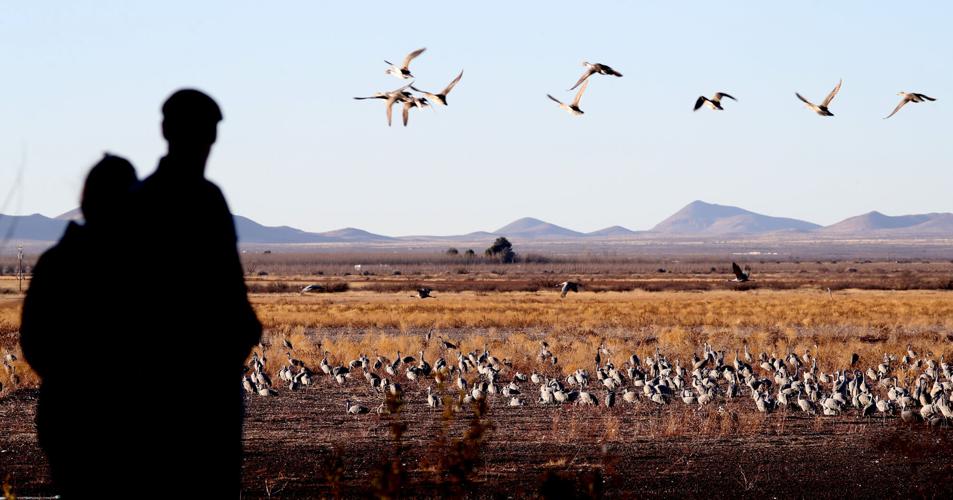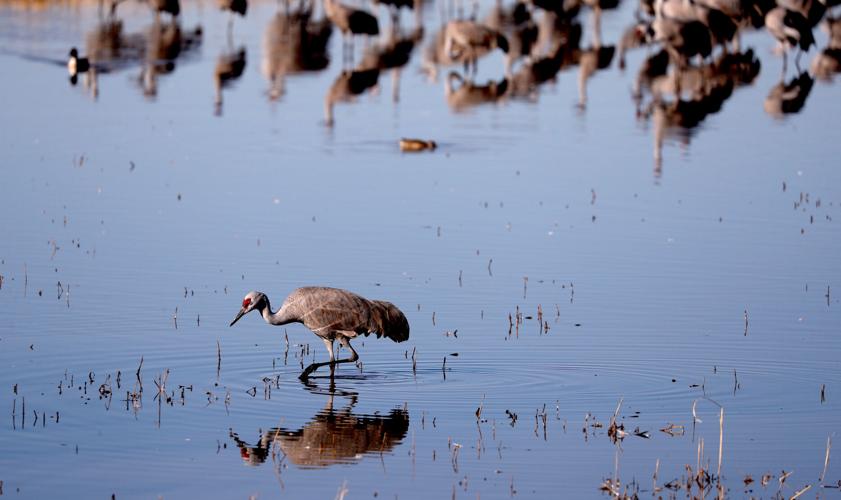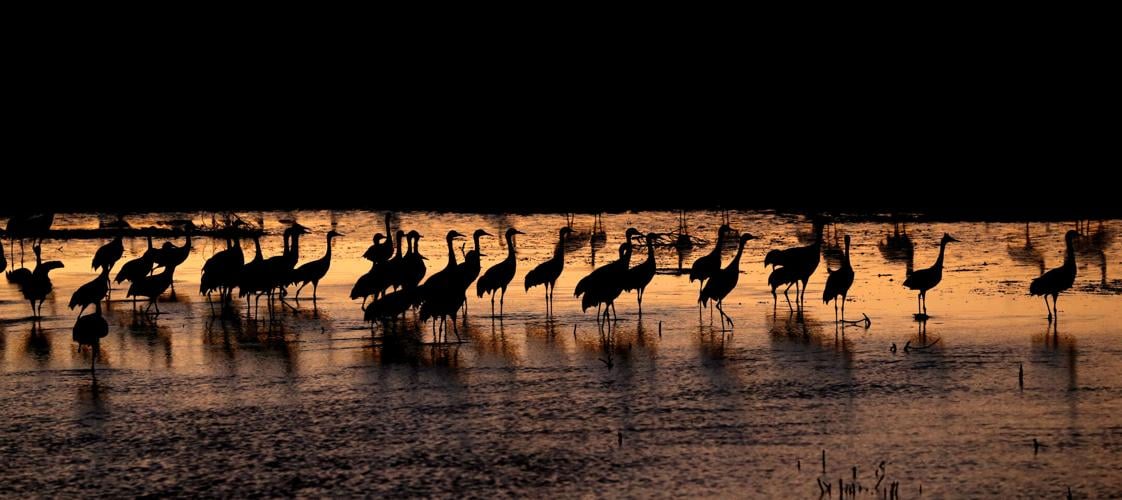Southern Arizona’s original snowbirds have arrived once again to wait out the winter at the Whitewater Draw Wildlife Area south of Willcox.
Thousands of sandhill cranes are now gathering in the shallow waters about 110 miles southeast of Tucson, and you can spy on them day or night using the Arizona Game and Fish Department’s newly refurbished crane webcam.
The department got the camera working again about two weeks ago, after it became waterlogged and an intense monsoon storm in August knocked down the barn where its Wi-Fi router was housed.
The camera is solar powered and can see in the dark. A live stream of its footage can be viewed at www.azgfd.gov/sandhillcranes.
But nothing beats being there to see the leggy, long-winged birds in person, said biologist Jeff Meyers, the department’s wildlife viewing program manager.
“It is in my opinion the best wildlife-viewing opportunity in the state of Arizona bar none,” he said.
The sandhill cranes began arriving at Whitewater Draw in mid-October. Meyers said several thousand of the birds are there now, and that number will continue to grow to 20,000 or more by mid- to late-January.
The birds will linger at Whitewater until late February or early March, roosting at night in the shallow pools and spending their days loitering in nearby agricultural fields.
Meyers said three different subspecies of sandhill crane spend the winter in Arizona: a smaller variety that migrates down from the Canadian Arctic and Siberia, medium-sized ones from the Yukon territory in northern Canada, and a large type that breeds and spends its summers in the northern U.S. and southern Canada.
Those giants — aptly named greater sandhill cranes — can tip the scales at more than 14 pounds and stand almost 4 feet tall with their necks stretched out.
“But even a small sandhill crane is still a pretty big bird,” Meyers said. The lesser variety approaches 3 feet in height and weighs up to 8 pounds.
To see tens of thousands of birds like that in one place is a feast for both the eyes and the ears. Meyers said sandhill cranes make “a cacophony of sound” that’s probably the closest thing a human will ever hear to what a pack of vocal dinosaurs must have sounded like.
The best time to view the cranes is during the 30 minutes before and after sunrise, when the birds fly off to feed for the morning.
Watch Now: Live stream shows sandhill cranes wintering at Whitewater Draw south of Willcox.
Arizona saw a record number of cranes in 2020, with an estimated 47,000 birds statewide and 26,000 at Whitewater Draw alone at the peak of the winter migration.
Meyers said shifting climate conditions may be driving changes in the birds’ annual pilgrimage.
“We’ve seen a gradual increase in the number of cranes, and they seem to arrive earlier and stay a little later than they used to,” he said.
Southern Arizona’s crane migration is only about a tenth the size of the more famous one that unfolds each year on the plains of Nebraska, Meyers said, but the birds linger four to five times longer and concentrate in a smaller area when they come to Whitewater Draw.
If you can’t make it down to see the spectacle in person, you can always stream the crane cam on your computer, tablet or smartphone.
Barring technical difficulties, the feed is up 24 hours a day all year long, and Meyers said he and his colleagues try to monitor it as much as they can to make sure the camera stays pointed at something of interest.
“It’s truly a pleasure to offer this unfiltered view of our state’s wildlife directly to the public,” he said, “giving them a chance to see the migration of this incredible species in action.”






